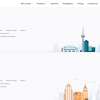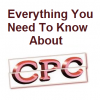Written by: Bryce Liggins
When setting up or managing an AdWords account, the account manager has endless options to choose from and countless decisions to make.
When a client is new to AdWords and has a limited ad budget (most businesses do), this process is made even more challenging because of the lack of historical data.
One important decision to make early on is where to draw the line on the maximum cost per click. With limited budgets and costs per click that can exceed $50, the right balance can be very hard to find.
- Do you choose to get fewer clicks and chase the high cost per click terms?
Or
- Do you set a lower CPC limit and get more clicks?
The marketing team here at Brolik recently decided to double our AdWords budget, which provided a perfect opportunity to test this question.
Background
At Brolik, one major service we offer is the design and development of high-end corporate responsive websites. Until we recently made the decision to increase our AdWords budget, we were in the camp of pursuing the lower cost, long-tail keywords and playing the quantity game (if we can drive enough calls, a couple are bound to be the right people, right?).
The opposite side of the discussion is the quality game which states that since AdWords functions as an auction based system, the only reason keywords should be expensive is if they are successful at driving value (bottom line impact) for the advertiser.
One important note to make is that websites range from a few hundred dollars to hundreds of thousands of dollars, depending if you choose a custom or template solution.
With a range like that, lead qualities vary greatly and with our high-end, custom service, we need quality leads.
Purpose
With this AdWords test, we wanted to identify if high quality leads came at a greater rate from cheaper long-tail keywords like “custom responsive website in Philadelphia,” or from expensive head terms like “web design agency.”
Hypothesis
While there are excellent arguments for both sides of this debate, at the beginning of this test my hypothesis was the following:
With a limited budget, pursuing keywords that are more expensive will drive more qualified leads than cheaper keywords.
Definitions for terms in the hypothesis are as follows:
Expensive: $12.00 cost per click or greater.
Cheaper: Less than $12.00 cost per click.
Qualified leads: Businesses that have a budget to afford our service, as determined by the Brolik sales team.
Method
Since the budget for the AdWords campaign was going to be doubled during the test period, I first let the doubled budget run. This allowed me to collect control data at the raised budget level, eliminating confounding variables that would be created by raising the budget at the same time as testing more expensive keywords.
Control data was collected for eight weeks.
Data during the control period are as follows:
| Less than $12.00 per click | |
| Cost | $1,425.66 |
| Average CPC | $10.33 |
| Lost IS (Budget) | 1.05% |
| Clicks | 138 |
| Bounce rate | 50.69% |
| Average visit duration | 1:47 |
| Contact Page Visits | 14 |
| Form Submits | 3 |
| Calls | 4 |
| Leads | 6 |
| Quality Leads | 6 |
| Cost per lead | $237.61 |
Following the eight week control period, any keywords that had an average cost per click less than $12.00 were paused. New keywords ranging in estimated cost per click from $12.00 to $25.00 were added to the campaign. This configuration also ran for eight weeks.
Data during the experiment period are as follows:
| $12+ cost per click | |
| Cost | $1,968.14 |
| Average CPC | $13.57 |
| Lost IS (Budget) | 17.97% |
| Clicks | 145 |
| Bounce rate | 57.14% |
| Average visit duration | 0:54 |
| Contact Visits | 54 |
| Form Submits | 15 |
| Calls | 26 |
| Leads | 17 |
| Quality Leads | 9 |
| Cost per lead | $218.68 |
Results
When evaluating the quality lead metric, the experimental group did produce a greater volume of quality leads.
However, in a Chi-Squared test, the Chi-Square value was 1.00, rendering the result non-statistically significant at a 95% confidence interval, failing to confirm the hypothesis.
Observed
| Cost Per Click | |||
| Converted? | <$12.00 | >$11.99 | Total |
| Yes | 5 | 9 | 14 |
| No | 133 | 136 | 269 |
| Total (Visitors) | 138 | 145 | 283 |
Expected
| Cost Per Click | |||
| Converted? | <$12.00 | >$11.99 | Total |
| Yes | 7 | 7 | 14 |
| No | 131 | 138 | 269 |
| Total (Visitors) | 138 | 145 | 283 |
Chi Square Calculation
| Cost Per Click | |||
| Converted? | <$12.00 | >$11.99 | Total |
| Yes | 0.49 | 0.47 | 0.95 |
| No | 0.03 | 0.02 | 0.05 |
| Total (Visitors) | 0.51 | 0.49 | 1.00 |
Discussion
While the test did not yield statistical significance with the increased volume of quality leads, positive benefits of the more expensive terms were revealed.
The most notable is a statistically significant increase in the volume of leads delivered to the sales team. Although quality leads are of more interest to the sales team, having a larger volume of leads decreases the time required to improve the lead quality from an optimization standpoint.
An unexpected benefit in the experimental ad group is a decreased cost per lead. While the cost for every click to the Brolik website did increase, the individual visitors were closer to a purchase decision and thus contacted us at a greater rate (11.72% opposed to 3.62%). This effectively reduced our cost per lead by 23.3%.
This means the “more expensive keywords” were actually cheaper in the big picture!
Since the quality of leads did not decrease, and the overall quantity of leads increased, we are continuing with a concentration on keywords with an average cost per click greater than $12.00.
However, additional testing on this topic would be beneficial. Larger datasets from varying industries could be used to cement this discussion and uncover other unexpected benefits or consequences.
For further discussion on the topic or about this test in particular, reach out to me on twitter at @bryceliggins
Author Bio:
Bryce is the Senior Marketing Strategist at Brolik, a digital marketing agency based in Philadelphia. Bryce uses his diverse background in marketing and finance to develop marketing campaigns that are both human and data driven. Bryce is also an avid home-brewer, and is working on building an Arduino into his kegerator as we speak.



